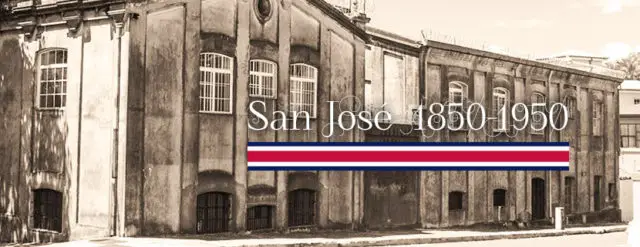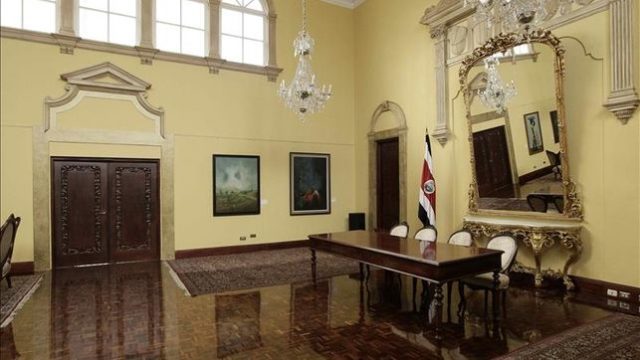The “Casa Amarilla” (Yellow House) must be one of your must-see places in San José. This building takes its name from the other color of its facade. It is the current headquarters of the Ministry of Foreign Affairs of the country. Located in the district of El Carmen, at the intersection between 7th Avenue and 11th Street, it is a neocolonial architecture building with neo-baroque decorations, built-in 1920 by the American architect Henry D. Whitfield, with the purpose of it being the headquarters the Central American Court of Justice. Considered a fundamental vestige of Costa Rican urban heritage, it was declared a National Monument on September 17, 1976, and it is a historical-architectural heritage.
History

In 1909, the headquarters of the Central American Court of Justice was established in the city of Cartago, Costa Rica, an international tribunal created to resolve conflicts, mainly border disputes that could occur between Central American countries. To construct an appropriate seat for the Court, the American philanthropist Andrew Carnegie donated $ 100,000. This building, known as the Peace Palace, began to be built in Cartago, but its construction was not completed since it was destroyed by the earthquake of 1910.
In November 1910, Carnegie made another similar donation; on condition that the new property was built in a different city and that the architect is an American of his choice. The chosen one was the American Henry D.Whitfield, who was also Carnegie’s brother-in-law. A property was chosen located near the Parque España, in San José, in the incipient Otoya neighborhood.
The construction of the Peace Palace was completed in 1916; however, the Court did not meet in it, since for that year the international agreement that supported it expired. As this was not renewed, Costa Rica asked the other Central American countries for approval to use the property, which was granted. After finishing its construction, the building became known as Carnegie Palace, Yellow Castle or Yellow House, the latter being the one that prevailed, due to the coloring of its walls.
In 1920, the Presidential Office was established in this building. In 1921, the Ministry of Foreign Affairs was transferred, and in 1924, the Legislative Branch occupied it for a short period. From 1922 until today, the Ministry of Foreign Affairs and Worship has used it as its headquarters.
Architecture
The architecture of the Yellow House is a product of the both aesthetic and political influence of the time it was built. In 1910, the Mexican Revolution had shaken the political landscape of the American continent. This fact, together with other events in Latin America and, along 1914, with the Great European War, caused strong repercussions in the architectural aesthetics of Costa Rica. New philosophical and literary positions were developed that claimed the “American Creole” product of both Hispanic and indigenous influence, a movement that was known as the “nationalist restoration”. Costa Rica did not escape this influence, which was strongly manifested in the publications of the American Repertoire of Joaquín García Monge, and later in the plastic arts, by artists such as Francisco Amighetti, Francisco Zúñiga, Juan Manuel Sánchez Barrantes and Manuel from Cruz González.
The nationalist restoration was a reaction to the neoclassical aesthetic that prevailed at the end of the 19th century, in which the classical European concept and academic beauty prevailed. However, this movement soon began to receive influences from the historicist fashion that appeared in the United States during the 1920s. This is why the architect of the Yellow House by the American Whitfield, tried to tune into this current, the chosen one was Spanish-American neocolonial architecture, known as “baroque novohispano”. This decision was criticized by some writers of his time, such as the historian Ricardo Fernández Guardia, for whom the new palace should be more representative of the classical architecture of colonial Costa Rica, in which the Baroque Novohispano had no manifestations.
The Yellow House has an absolute symmetry with pure volumes, with gable roofs, interrupted by an elegant baroque style main door. On both sides, it has two side doors also baroque, but simpler than the main one, identical to each other. To the south, the building has a large quadrangular volume with a central courtyard and perimeter corridor, intersected by another smaller and larger quadrangular volume, which forms a monitor with its roof. To the north, another rectangular volume finishes off the simple set.
Main Features

Among the most relevant features that this colonial work has, we have that it is constituted by a total volumetric symmetry with covers that form the main door in the middle of them. The Yellow House also has a quadrangular patio that intersects with a slightly smaller one. In the libraries that it has, there are diplomatic documents and treaties, some of them signed by former President Abraham Lincoln.
Another of the essential characteristics that are found inside the house is the table located inside the “Blue Room”, previously called the Hall of the Americas, in which the presidents of different nations were present for the first Summit of Central American Presidents with President John F. Kennedy. This Hall is one of which different international agreements and conventions have been signed under the principles of Public International Law that was agreed between Central American nations, and meetings of different kinds were promoted in which decisions of great importance were taken a policy for the improvement of the external policy of Costa Rica.
Tours to the Yellow House
The Yellow House of Costa Rica has been declared as a historical heritage site of the country, which is why it opens its doors to the public on certain dates so that those who wish to visit such an interesting diplomatic center can do so through a guided tour offered by the same officials of the diplomatic headquarters and is endorsed by the Ministry, of course first a reservation previously signed by the institution must be made; It is a totally enjoyable experience which is advisable to do if you have the opportunity.

